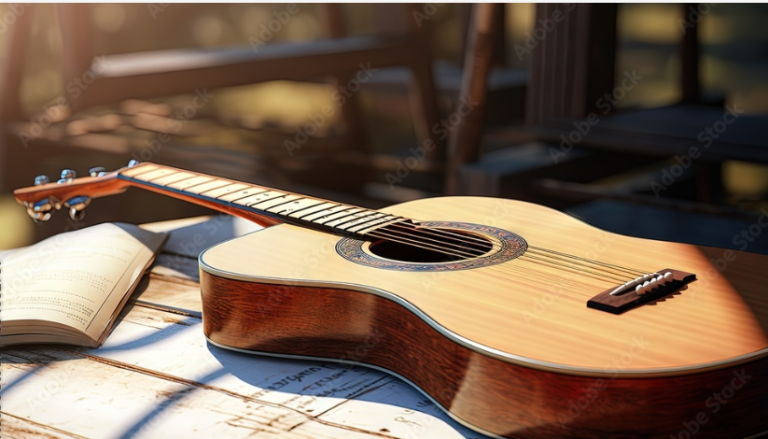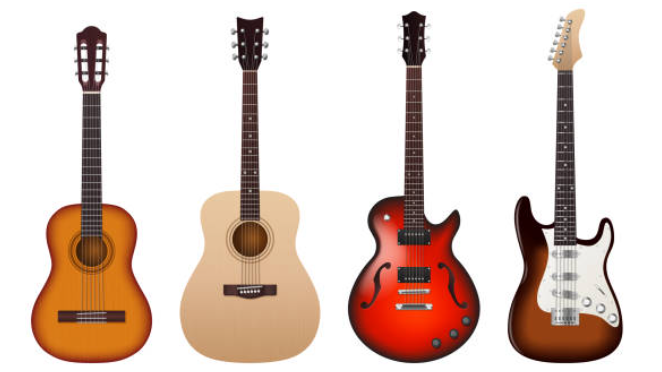Introducing 4 Cadences: The Musical Punctuation

If music is a language, then cadences are its punctuation. Just like a sentence can end with a period, a question mark, or an exclamation point, music uses cadences to signal pauses, endings, or unexpected turns. Think of them as musical commas, periods, or even dramatic plot twists.
Whether you’re writing songs, learning to play pieces, or just want to sound cooler when you talk about music, understanding cadences is a must. Today, let’s explore four common types: Perfect, Plagal, Imperfect and Deceptive, in a way that won’t make your brain cramp.
What Is a Cadence?
Is a sequence of chords that brings a musical phrase to a close—either temporarily or completely. In simple terms, it’s how music ends a thought, just like we end sentences with periods, commas, or ellipses…
They give structure and shape to music. Without them, everything would feel like one endless run-on sentence. With them, melodies feel organized, emotionally satisfying, and easier to follow—whether it’s a pop song, a jazz solo, or a Beethoven symphony.
Now let’s break down the four most common types of cadences you’ll run into. Spoiler: they each have their own personality.
Perfect Cadence (a.k.a. The Full Stop)
Also known as: Authentic cadence
Chords involved: V → I (in major) or V → i (in minor)
This is your classic “the story is over” kind. It’s the musical equivalent of a strong, confident period at the end of a sentence. If you’ve ever heard a song or a classical piece that ends with a big, satisfying “ta-da!” moment, that’s a perfect cadence in action.
Real-life comparison: It’s like finishing a text with: “I’ll be there at 6.”
Example: In the key of C major, a perfect cadence would be G (V) going to C (I). That tension on the G resolves oh-so-smoothly back to C. Your ears go, “Ahhh, that’s done.”
Plagal Cadence (a.k.a. The Amen Ending)
Also known as: The “churchy” cadence
Chords involved: IV → I
This one’s gentler. It doesn’t shout, “I’m done!” so much as it says, “And that’s how it is.” You’ll often hear it at the end of hymns or gospel songs, which is why it’s nicknamed the “Amen.”
Real-life comparison: It’s like ending a story with: “And that’s why you always knock before entering.”
Example: In C major, it’s F (IV) to C (I). It still feels final, but with a soft landing. Like closing a book with a smile instead of a slam.
Imperfect Cadence (a.k.a. The Musical Cliffhanger)
Also known as: Half cadence
Chords involved: Anything → V
This one doesn’t end the story—it pauses it. The Imperfect Cadence stops on the V chord, leaving you hanging like a “To be continued…” screen at the end of your favorite show. It builds tension but offers no resolution. Your ears are screaming, “Wait, what happens next?!”
Real-life comparison: It’s like saying: “And then he opened the door and saw—”
Example: In C major, it could be C (I) to G (V) or A minor (vi) to G (V). No matter how you get there, if you land on V, you’re in cliffhanger territory.
Deceptive Cadence (a.k.a. The Plot Twist)
Also known as: The sneaky one
Chords involved: V → vi (in major) or V → VI (in minor)
Now we’re getting juicy. The deceptive cadence builds up all that tension with a V chord, just like the perfect cadence, but then instead of resolving back to I, it swerves to vi. It’s like expecting the hero to win, and then they get hit with a pie. Not what you thought would happen, but oddly satisfying.
Real-life comparison: It’s like texting: “I have something to tell you… I ate your leftovers.”
Example: In C major, it’s G (V) going to A minor (vi). Your ears are waiting for the big finish, and then—plot twist—it goes somewhere more moody.
So… Why Should You Care?
Whether you’re writing music, improvising, or just listening more deeply, cadences give you tools to shape your musical phrases. Want to end a phrase with a bang? Go for a perfect candence. Want something smooth and conclusive? Plagal. Want to keep people guessing? Go for a deceptive one.
And if you’re learning to play by ear, spotting them in songs is like finding signposts on a road trip—you’ll understand where the music’s headed and why it feels the way it does.
Now, Try It Yourself
Next time you’re practicing or writing a song, experiment with these three:
- Write a melody and try ending it with each type of cadence.
- Listen to your favorite songs and see if you can spot where these cadences appear.
- Try playing I-IV-I or V-vi on your instrument and see how the mood shifts.
Cadences are tiny but mighty, they’re the punctuation that gives your music structure, flow, and emotion.
If you’re interested in learning an instrument, at Real Brave, we offer an incredible experience like no other place in music lessons for kids and adults by guiding them from the beginning stages of getting to know an instrument all the way through performing for family and friends on stage. Our instructors come from all over the world, bringing extensive experience on a wide range of instruments. Click below and book a free lesson with us!
Author: Daniel Powers Jr, the founder of Real Brave™, serves as the chief inspiration to thousands of students in the Real Brave music instruction program. He’s also the visionary behind PracticePad™, an online platform for live one-on-one online music lessons, lesson tracking, and scheduling. Beyond his entrepreneurial pursuits, Daniel leads a non-profit organization that provides formerly homeless children with access to music education, making a profound impact on their lives. His unwavering dedication to music, innovation, and education continues to inspire individuals to reach their fullest potential while creating positive change in communities. Follow Real Brave on all the socials:
youtube.com/@realbraveinc
twitter.com/realbraveinc
https://www.tiktok.com/@realbraveinc
instagram.com/realbraveaudio
facebook.com/realbraveinc






